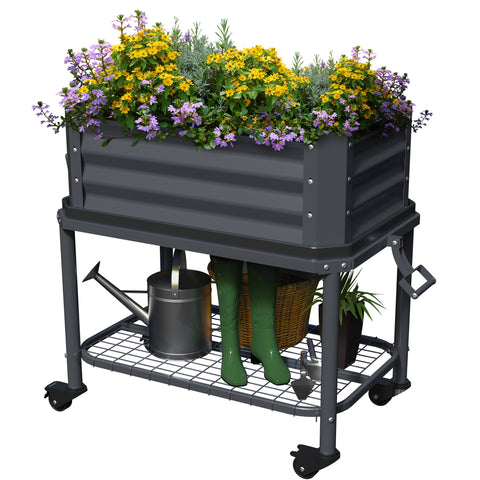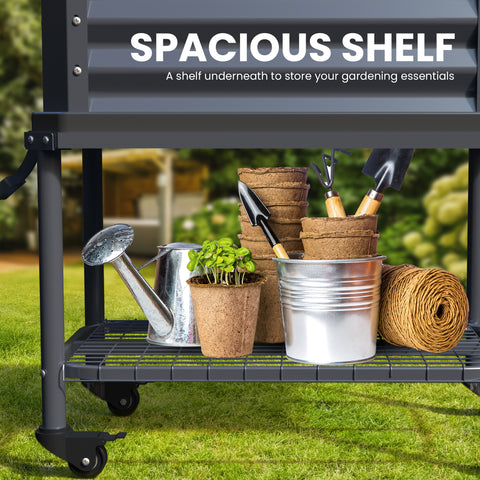Spring is the season when plants and trees begin to bloom.Spring gardening is special because .Spring provides the right temperature (after winter and the previous summer), sunshine (12 hours per day), water and other services as the bright sunshine of clear spring skies and the adaptation of time itself to the flowers lead to further flowering in spring.Spring is the flowering season. Flowering ensures the continued extension of the life of any plant or tree in the universe.The leaves of trees and shrubs can grow again in the spring because the area where the leaves grow (called meristem) does not die off in the winter but grows in the spring when the weather is more favorable.The following content also has some reference value for raised garden beds
- Arrange the flower beds and borders
When you start gardening in the spring, do a general sweep, removing leaves and other debris from flower beds and edges. Now, you can remove dead plants from deciduous grasses and perennial herbs, but if you want to live in harmony with wildlife, it's best to leave them until early spring.When you start gardening in the spring, simply border and bed back to bare soil. Put the dead organic matter you've cleaned up into a compost heap or bin to decompose. Remove the weeds you see, burn them, or bring in your brown bucket. Do not compost them as the seeds will germinate later and cause more problems.

2.Cover the area around the plant with wood shavings, leaves, hay, straw, or bark, using at least 2 inches of organic material per year.If necessary, cover the crop in the spring and convert it to soil. The recommended amount of fertilizer for spring is 1 pound of nitrogen per 1,000 square feet.
Different mixtures and products determine the duration of the application, how much to use, and how to use it (granular or liquid).
- About sowing
Garden beds can be planted with the following seeds in spring: Hyacinths: They are one of the most popular flowers in spring gardens, and they come in many different colors and flower shapes to add color and beauty to a garden. Daisies: These hardy plants can be sown in early spring, and they provide an easy and beautiful floral choice. Lily of the Valley: These flowers are often used to adorn the edges of gardens, and they have beautiful blue flowers that can add to the visual effect of a garden. Anemone: These flowers are often used to adorn the corners and edges of gardens. They have beautiful white flowers that can add to the visual effect of a garden.
Cosmos: They come in many different colors and flower shapes and can add color and beauty to a garden. Peppers and eggplants can also be planted in early spring
- Kill pests in the garden
When you start gardening in the spring, you'll be able to monitor and kill hibernating pests, saving you a lot of trouble in the spring and summer. Look closely at the perennials' crowns for winter shelter for slugs, snails and their communities.
- Install water pipes and start collecting rainwater

Install water pipes: Depending on the size of your garden and the amount of water you need, choose a suitable water pipe and install it in your garden.Install a rainwater collector: Install a rainwater collector on the water pipe to collect rainwater and channel it into the water pipe. The rainwater collector can be a simple barrel or a more complex system, and you can choose the collector that suits you. Install a tap: Install a tap at the end of the pipe so that water can be easily accessed when needed. You can choose a tank with a tap for easier access to the collected rainwater.Install a tank: If a larger water capacity is needed, consider installing a tank in your garden to store more rainwater. Tanks can be underground or above ground.Regular cleaning: Water pipes and collectors need to be cleaned regularly in order to keep them clean and avoid debris and dirt affecting the garden.Fair use: When using collected rainwater, it should be used properly, not wasted. You can choose the right watering method according to the need to avoid the waste of water
- Cleaning garden tools
Cleaning garden tools is a very important task because it ensures that your tools are clean before use, helping to prevent the spread of viruses, fungi, and other harmful bacteria. Here are the steps to clean your garden tools:Rinse the tool with water: Soak the tool in clean water and rinse thoroughly with a water gun or hose to remove soil and debris from the surface.Use soapy water: For dirtier or stained tools, use a mixture of warm water and soap. Use a sponge or brush to gently wipe the surface of the tool, especially the blade and sharp parts. Then rinse off with water.Sterilizing tools: Sterilize tools using a disinfectant or bleach solution to ensure that viruses, fungi, and other harmful bacteria are killed. Put the disinfectant or bleach solution in the water and soak the tool for about 10 minutes. Then rinse off with water.Dry tools: Dry tools with a towel or paper towel, making sure they are completely dry before storing.Maintenance tools: After cleaning and disinfecting tools, a small amount of oil or rust inhibitor can be applied to protect tools and prevent rust.Tools should be cleaned and disinfected after each use to ensure they remain clean and healthy. This extends the life of the tools and keeps the garden healthy and beautiful.

Spring temperature is suitable, conducive to flower growth and germination. The long sunshine time in spring is conducive to the photosynthesis of flowers and promote the growth and flowering of flowers. Spring rainfall is more, soil moisture is suitable, which is conducive to flower growth and root development. Spring is the key season for flower growth: it is suitable for sowing and transplanting, which is conducive to the growth and development of flowers.









